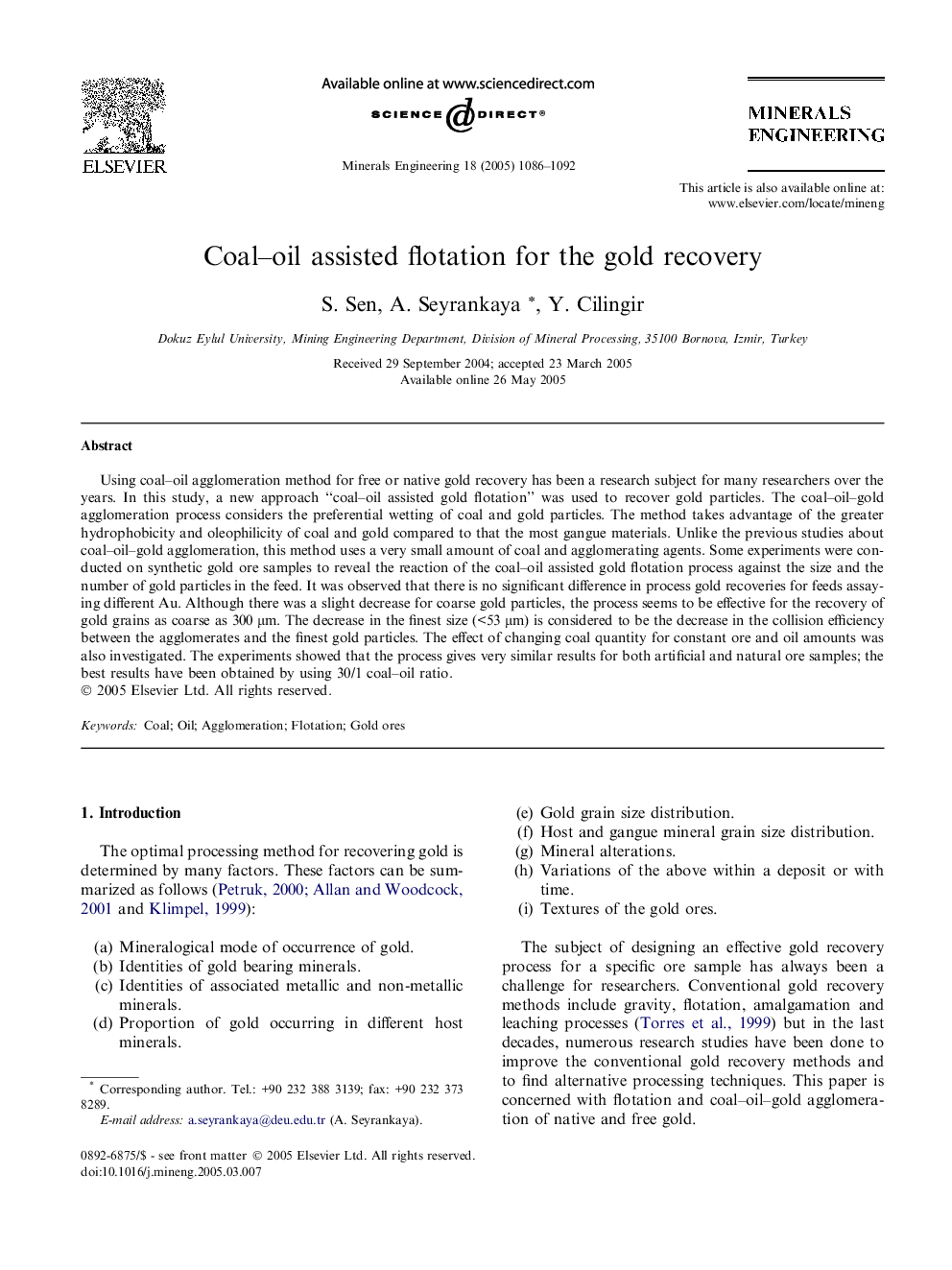| Article ID | Journal | Published Year | Pages | File Type |
|---|---|---|---|---|
| 10279780 | Minerals Engineering | 2005 | 7 Pages |
Abstract
Using coal-oil agglomeration method for free or native gold recovery has been a research subject for many researchers over the years. In this study, a new approach “coal-oil assisted gold flotation” was used to recover gold particles. The coal-oil-gold agglomeration process considers the preferential wetting of coal and gold particles. The method takes advantage of the greater hydrophobicity and oleophilicity of coal and gold compared to that the most gangue materials. Unlike the previous studies about coal-oil-gold agglomeration, this method uses a very small amount of coal and agglomerating agents. Some experiments were conducted on synthetic gold ore samples to reveal the reaction of the coal-oil assisted gold flotation process against the size and the number of gold particles in the feed. It was observed that there is no significant difference in process gold recoveries for feeds assaying different Au. Although there was a slight decrease for coarse gold particles, the process seems to be effective for the recovery of gold grains as coarse as 300 μm. The decrease in the finest size (<53 μm) is considered to be the decrease in the collision efficiency between the agglomerates and the finest gold particles. The effect of changing coal quantity for constant ore and oil amounts was also investigated. The experiments showed that the process gives very similar results for both artificial and natural ore samples; the best results have been obtained by using 30/1 coal-oil ratio.
Related Topics
Physical Sciences and Engineering
Chemical Engineering
Chemical Engineering (General)
Authors
S. Sen, A. Seyrankaya, Y. Cilingir,
